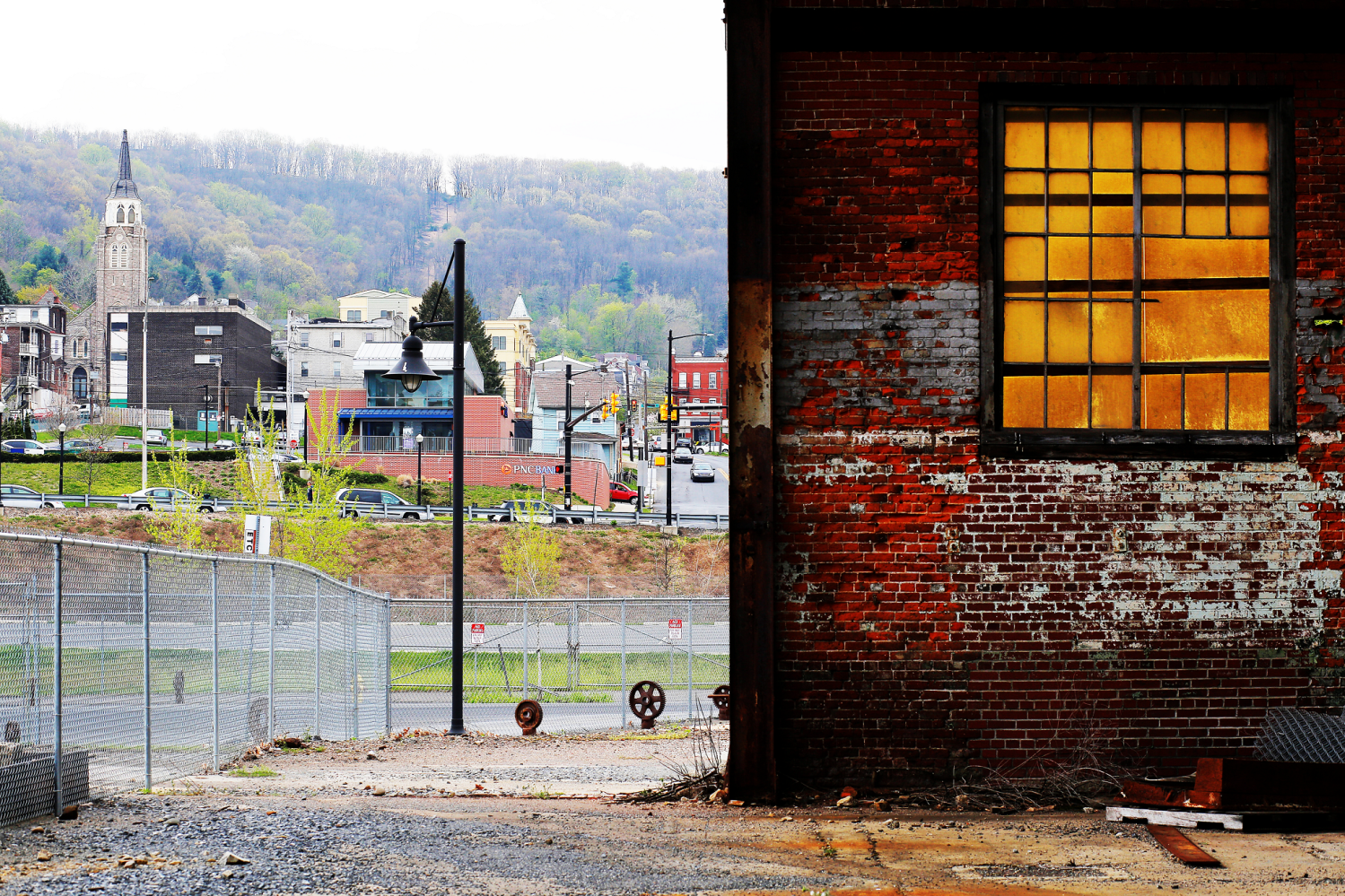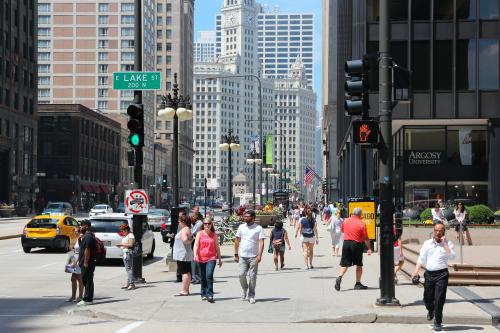The 2016 election revealed a dramatic gap between two Americas—one based in large, diverse, thriving metropolitan regions; the other found in more homogeneous small towns and rural areas struggling under the weight of economic stagnation and social decline.
This gap between two American geographies came as a shock to many observers.
While it is true that many American leaders had grown disconnected from a significant portion of the country, something else had happened, too: the nation’s economic trends had changed.
For much of the 20th century, market forces had reduced job, wage, investment, and business formation disparities between more- and less-developed regions. By closing the divides between regions, the economy ensured a welcome convergence among the nation’s communities.
However, in the 1980s, that long-standing trend began to break down as the spread of digital technology increasingly rewarded the most talent-laden clusters of skills and firms.
As the economy changed, convergence gave way to divergence, as a fortunate upper tier of big, dense metropolitan areas (the top 2 percent of U.S. communities based on measures of growth and wages) began to consistently grow faster than the median and least-prosperous cities.

By the present decade, a clear rank-ordered hierarchy of economic performance by community size had emerged.

Big, techy metros like San Francisco, Boston, and New York with populations over 1 million have flourished, accounting for 72 percent of the nation’s employment growth since the financial crisis. By contrast, many of the nation’s smaller cities, small towns, and rural areas have languished. Smaller metropolitan areas (those with populations between 50,000 and 250,000) have contributed less than 6 percent of the nation’s employment growth since 2010 while employment remains below pre-recession levels in many ‘micro’ towns and rural communities (those with populations less than 50,000).
As a result, few can now deny that the geography of America’s current economic order has brought economic and social cleavages that have spawned frightening externalities: entrenched poverty, “deaths of despair,” and deepening small-town resentment of coastal cosmopolitan elites. It is baleful realities like these that caught many politicians, academics, and journalists off guard in 2016 as they poured through post-election red-blue maps. In a very real way, the 2016 election of Donald Trump represented the revenge of the places left behind in a changing economy.
So now what? Fortunately, an outbreak of new thinking is raising the possibility of a response. Most notably, a growing chorus of voices is concluding that a new set of understandings and policies is needed to push back against today’s epidemic of divergence and to knit the country back together. Scholars, journalists, politicians, local leaders, and investors are all beginning to reassess the costs of inaction after decades of exactly that. No longer does nonchalance about the pulling away of “superstar” cities and the decline of “left-behind places” seem tenable.
Which is why we believe it is time to counter many economists’ and policymakers’ optimistic faith in the natural “catch up” of lagging places with a new focus on boosting economic opportunity for left-behind communities and residents in the United States.
Along these lines, we think the current moment requires robust national action to push back against the divergent features of today’s digitally super-charged economy. This will require developing new ways of thinking and new strategies to combat the threat of uneven development. Traditionally, regional development policies have taken two distinct forms: spatially-blind, “people-based” policies that seek to maximize economic efficiency by supporting the natural emergence of dynamic high-value, big-city economic activity, and “place-based” policies that try to achieve regional equity to ensure more regionally inclusive economic growth. What is actually needed, by contrast, is a mixed strategy that respects the efficiency of hubs of concentrated economic activity but seeks to extend this kind of dynamism to more regions by ensuring access to the basic prerequisites of high-quality growth.
Therefore, we favor a third approach to regional policy, something akin to what scholars Simona Iammarino, Andrés Rodriguez-Pose, and Michael Storper call “place-sensitive distributed development.” This approach assumes that regional equity won’t occur without economic development but that excessive imbalances between regions can jeopardize such development. Our place-sensitive strategy seeks to mitigate uneven development by ensuring economic growth occurs in a wider swath of regions.
What might place-sensitive distributed development look like in practice? To give a sense, we suggest five examples of the kinds of strategies that would help—three that focus on ensuring more regions have the assets and capabilities to flourish, and two more that suggest what specific regional development initiatives might look like. Here’s a look:
- Boost the digital skills of left behind places. The workers, industries, and places that possess strong digital skills have enjoyed distinct economic rewards. To push back against this winner-take-all dynamic of today’s tech economy, every region’s workforce should be prepared to participate in the digital economy.
- Ensure businesses in lagging regions have access to capital. The pullback in small business lending following the financial crisis has hit less densely populated parts of the country particularly hard. Efforts to improve data on small business performance can help banks lower the transaction costs of extending small loans while innovations in financial technology can help create a secondary market for them and reduce risk. Boosting alternative, non-bank sources of capital, such as venture capital funding, can also help support regional economic growth.
- Reduce gaps in broadband. Large gaps in broadband service and subscriptions have put businesses and workers in less densely populated areas at a huge disadvantage. Policy proposals should focus on connecting more people and encouraging greater subscription rates in places already endowed with broadband.
- Identify “growth poles” that can support regional growth. While it may be inefficient to “save” every left-behind small city or rural community in the U.S., targeted federal policy aimed at strengthening 10 or so promising mid-sized centers of advanced industry activity would bring more growth to some communities adjacent to many more lagging towns and rural areas. Federal investment in these “growth poles” will put more communities on a path toward self-sustaining economic growth.
- Help Americans move to opportunity. The federal government should expand the availability of financial support for individuals who want to make long-distance moves to places promising greater economic opportunity. At the same time, federal policy should encourage states and localities to relax zoning restrictions and construct new housing units to increase the supply of affordable housing. For those who wish to stay in their communities to live but not necessarily to work, state and local governments could provide a subsidy for workers commuting to adjacent communities.
In sum, we need both people-based and place-based policies—and above all a “place-sensitive vision for distributed development”—to tamp down the nation’s deepening territorial divides. Our proposals represent a first sketch of what might work; they are meant to inspire additional creative thinking and experimentation in the coming years.
Inaction, after all, is no longer an option: the costs of spatial divergence to American economic and political life are now too great to ignore.
Report produced by the Metropolitan Policy Program and Governance Studies.
The Brookings Institution is committed to quality, independence, and impact.
We are supported by a diverse array of funders. In line with our values and policies, each Brookings publication represents the sole views of its author(s).








